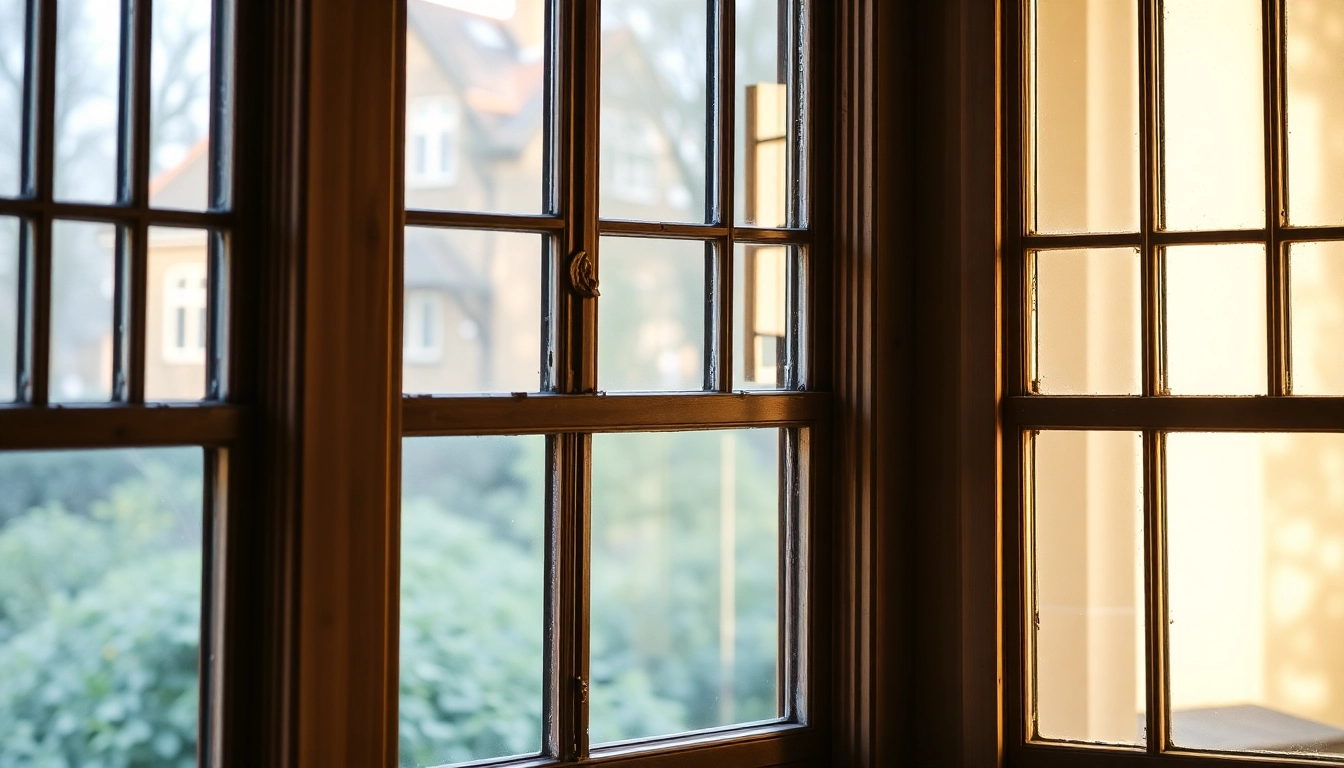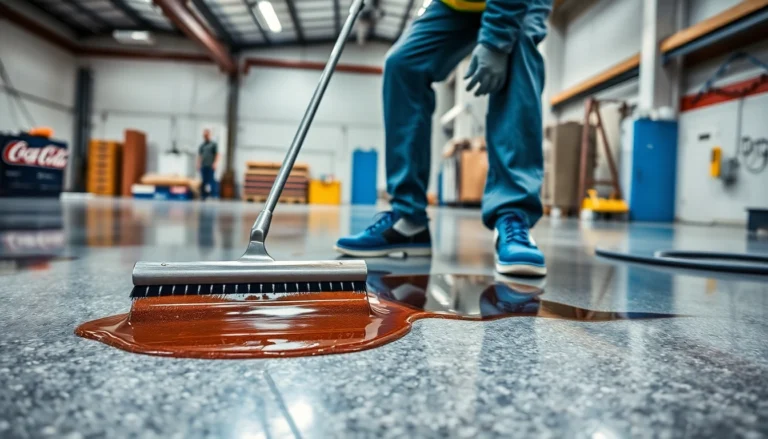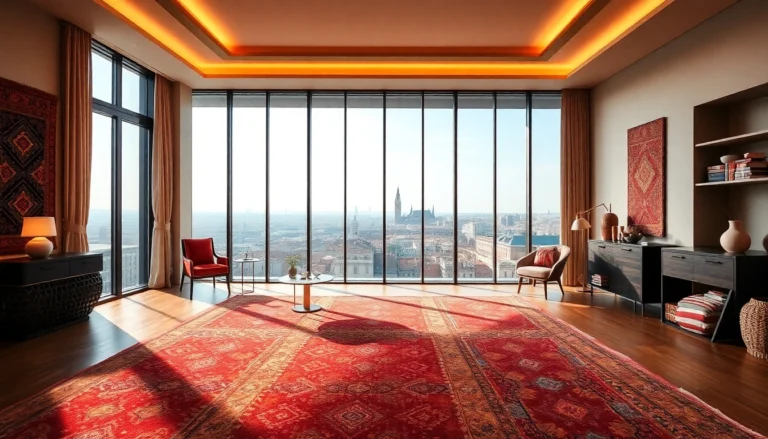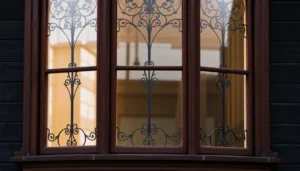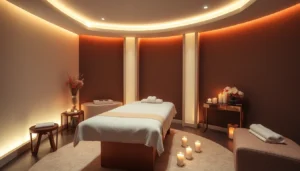Understanding Victorian Sash Windows: Design and Characteristics
Victorian sash windows stand as a quintessential element of Britain’s architectural heritage, embodying the ornate and elaborate aesthetic typical of the Victorian era (1837–1901). These windows are more than mere functional features; they are emblematic of the period’s craftsmanship, cultural values, and stylistic preferences. For homeowners and preservation enthusiasts alike, understanding the nuances of Victorian sash windows is crucial for maintaining their historic charm while also enhancing functionality and energy efficiency. Today, the demand for high-quality Victorian sash windows has spurred innovations that balance traditional aesthetics with modern performance, making them an enduring choice for period property restoration and new builds inspired by Victorian design.
Historical evolution and key features of Victorian sash windows
Victorian sash windows evolved from earlier Georgian styles, but they introduced a more elaborate and decorative approach to their design. During this period, advancements in glass manufacturing technology enabled larger panes of glass to be produced, allowing for bigger, more prominent window designs that flooded interiors with natural light. These innovations contributed to the characteristic “two over two” configuration—two sashes, each with two panes of glass—though variations with more complex arrangements also appeared.
Originally crafted from timber, Victorian sash windows reflected both the technological possibilities and aesthetic ideals of the era. The timber frames were often robust, with thick-profiled sashes designed to endure over generations. The key features that distinguish Victorian sash windows include their vertical sliding mechanism, decorative glazing bars, and often intricate finishing details such as sash horns or finials. Their presence in terraced houses, Victorian villas, and grand townhouses helped define the streetscapes, grounding neighborhoods in a sense of architectural tradition and craftsmanship.
The Victorian period marked a transition from the restrained symmetry of Georgian designs to more ornate and expressive architectural features. This evolution is evident in the larger sash sizes, complex glazing patterns, and the incorporation of decorative elements—such as carved timber motifs or contrasting painted finishes—adding character to each installation.
Distinctive elements: sash configurations, glazing bars, and decorative horns
The sash configuration of Victorian windows was designed for both aesthetic appeal and practical operation. Typically, Victorian sash windows consist of two vertically sliding sashes, with some designs allowing for multi-pane configurations—such as the iconic “six over six” or “eight over eight” panes—creating a beautiful grid-like pattern that appeals to traditional taste.
Glazing bars, also known as muntins, are a defining feature that segment the large panes of glass into smaller, decorative sections. Victorian glazing bars are often thicker and more ornate compared to modern counterparts, contributing to the period-specific look. Some designs include additional features like astragal bars or pattern laminated glass, further enhancing authenticity.
Decorative horns—small timber or uPVC extensions at the sash’s top or bottom—are characteristic of Victorian sash windows. Originally, these horns served to reinforce the sash’s structural integrity, especially where the sashes met the frame, but they quickly became aesthetic elements symbolizing the era’s craftsmanship. Contemporary reproductions often incorporate these horns for historical accuracy when restoring or installing period-appropriate sash windows.
Material choices: traditional timber versus modern uPVC options
Historically, Victorian sash windows were crafted from high-quality timber, selected for its durability, insulating properties, and aesthetic appeal. Traditional timber frames were handcrafted with bespoke profiles, often using species such as oak, mahogany, or East European softwoods like Siberian pine. These materials, combined with skilled craftsmanship, resulted in windows that aged gracefully, developing a pleasing patina and character over time.
However, contemporary options have expanded with the advent of uPVC (unplasticized polyvinyl chloride) and aluminium alternatives. Modern uPVC sash windows offer advantages in maintenance, insulation, and cost-effectiveness. They are resistant to rot, warping, and require minimal upkeep, making them particularly appealing for homeowners seeking heritage aesthetics coupled with modern performance. Many manufacturers produce uPVC Victorian sash windows with authentic features, including sash horns, timber-effect finishes, and simulation of traditional glazing bars.
The choice between traditional timber and uPVC ultimately hinges on balancing authenticity, budget, and maintenance preferences. For heritage properties or those aiming to preserve their period character, timber remains the preferred material. Conversely, uPVC provides an accessible, durable, and energy-efficient alternative suitable for a broader range of projects.
Benefits and Challenges of Installing Victorian Sash Windows
Enhancing aesthetics and historic character of period properties
One of the primary reasons homeowners choose Victorian sash windows is their unparalleled ability to elevate a property’s aesthetic and preserve its historic character. These windows add a distinctive charm, from their intricate glazing patterns to their robust timber frames, which complement period architecture seamlessly. Restoring or installing authentic Victorian sash windows can significantly increase the visual appeal of terraced houses, Victorian villas, and conservation area properties.
Moreover, Victorian sash windows are versatile; they can be tailored with bespoke detailing such as carved timber horns, decorative glass, or contrasting paint finishes, enabling homeowners to personalize their heritage features while maintaining historical accuracy. When properly installed, they serve as focal points that enhance curb appeal and provide a sense of timeless elegance.
The visual impact is complemented by their ability to be integrated with contemporary features such as double glazing and acoustic insulation. This makes Victorian sash windows an excellent choice for homeowners who wish to retain period aesthetics while achieving modern comfort standards.
Improving energy efficiency with double glazing and insulation techniques
Historically, Victorian sash windows offered little insulation, often resulting in drafts and heat loss. Modern technology, however, allows for the transformation of these traditional designs into energy-efficient elements through double or even triple glazing. Double glazing involves installing two panes of glass separated by gas-filled cavities—usually argon—greatly enhancing thermal insulation and reducing heating costs.
Advanced glazing options can include low-emissivity (low-e) coatings which reflect heat back into the room while allowing light through, and acoustic glass to decrease noise pollution—ideal for homes in busy urban settings. Additionally, secondary glazing, where an additional pane is fitted internally, can be a cost-effective retrofit for existing Victorian sash windows, improving insulation without compromising historic features.
Insulation techniques can be further optimized with carefully designed weatherproofing, draught-proofing, and upgrading existing frames with insulated sashes. By combining these methods, Victorian sash windows can meet modern standards for energy efficiency while retaining their aesthetic integrity.
Investment in energy-efficient enhancements not only benefits the environment through reduced carbon footprint but also improves internal comfort and lowers utility bills—a compelling argument for homeowners considering restoration or replacement.
Addressing maintenance, repair, and restoration considerations
While Victorian sash windows boast durability and beauty, they are not maintenance-free. Traditional timber frames require regular upkeep—such as painting, sealing, and timber treatment—to prevent rot, insect damage, and weathering. Periodic repair of sash cords, balances, or hardware is part of long-term maintenance.
Restoration projects often involve repairing or replacing decayed timber, re-glazing, and restoring decorative elements like sash horns or intricate glazing bars. Skilled craftsmen familiar with heritage standards apply techniques that respect the original craftsmanship and materials, ensuring longevity and authenticity.
Modern innovations like uPVC sash windows reduce maintenance burdens significantly. They do not require painting and resist rot or corrosion, suitable for homeowners who prefer a less labor-intensive solution.
However, historic preservation regulations can influence repair options, especially within conservation areas or listed buildings. It is typically recommended to engage specialists experienced in authentic restoration who understand both traditional methods and modern building regulations.
Ultimately, proper maintenance enhances the lifespan and aesthetic appeal of Victorian sash windows, safeguarding your investment and heritage integrity for generations to come.
Selecting the Right Victorian Sash Windows for Your Home
Comparing bespoke handcrafted versus mass-produced options
When choosing Victorian sash windows, homeowners face the decision between bespoke, handcrafted options and mass-produced alternatives. Bespoke windows, typically crafted by skilled artisans, allow for meticulous attention to detail, with options to replicate specific period features such as decorative glazing, mouldings, sash horns, and joints. These are ideal for heritage restorations, listed buildings, or customers seeking authentic reproduction, and often come with a higher price tag reflecting the craftsmanship involved.
Conversely, mass-produced PVC or uPVC sash windows are manufactured at scale, ensuring consistency, lower costs, and faster lead times. Modern uPVC profiles are engineered to mimic traditional timber finishes, including woodgrain textures and authentic detailing like sash horns. They offer excellent durability, minimal maintenance, and superior energy efficiency.
The choice depends on project scope, budget, and authenticity requirements. For premium heritage projects, bespoke craftsmanship guarantees historical and aesthetic fidelity. For large-scale renovations or budget-conscious homeowners, modern manufacturing provides a practical yet visually convincing alternative.
Consulting with specialists for authentic reproduction and customization
Expertise plays a pivotal role in achieving an authentic Victorian aesthetic. Reputable specialists can guide you through the selection process, offering tailored solutions that respect historical accuracy while incorporating modern features for performance improvements. Whether it’s matching the original profile with limited historical records or customizing glazing patterns to suit your style, expert advice ensures your investment aligns with heritage standards.
Key considerations include choosing appropriate materials, dimensions, hardware, and decorative features. Builders and restorers with experience in Victorian architecture can provide valuable insights on subtle details that preserve the period character—such as sash cord materials, pulley types, and traditional hardware fittings.
Additionally, collaboration with conservation officers may be necessary for listed buildings or properties in protected areas, ensuring compliance with regulations while achieving your aesthetic and functional goals.
Cost factors: budgeting for quality, installation, and preservation
The cost of Victorian sash windows varies widely based on materials, design complexity, size, and whether they are bespoke or standard models. Traditional timber windows tend to be more expensive initially due to material costs and craftsmanship, but deliver enduring quality and authenticity. Modern uPVC alternatives are generally more budget-friendly and require less upkeep.
Installation charges also influence overall costs—professional fitting by specialists familiar with heritage properties is recommended to prevent damage and preserve structural integrity. Restoration, especially of older frames, can incur additional expenses targeted toward repairs, sash cord replacements, or hardware refurbishments.
When budgeting, consider long-term savings from improved energy efficiency, reduced maintenance, and preserved property value. It’s advisable to obtain multiple quotes from reputable suppliers and installers who understand heritage standards, ensuring transparency and value for investment.
Installation and Restoration Best Practices
Step-by-step guide to professional fitting and preservation
Proper installation is vital to maximize the performance and aesthetic longevity of Victorian sash windows. A typical process includes:
- Initial Assessment: Historical review of the existing window and building regulations, including any conservation area restrictions.
- Measurement and Design: Precise measurements taken, selecting suitable materials, and designing bespoke profiles if necessary.
- Preparation: Removal of existing windows with care to minimize damage to surrounding masonry or finishes.
- Frame and Sash Construction: Manufacturing or refurbishing sash frames with traditional craftsmanship or high-quality uPVC profiles.
- Fitting: Secure installation with proper sealing, weatherproofing, and hardware fitting to ensure smooth operation.
- Finishing Touches: Painting, glazing, and final inspection to confirm functionality and aesthetic quality.
Employing specialists experienced in heritage window installation ensures compliance with preservation standards and enhances durability.
DIY tips for minor repairs and upkeep of Victorian sash windows
For homeowners interested in maintaining their Victorian sash windows, some simple DIY repairs can sustain their appearance and functionality:
- Cleaning: Regularly clean glass and timber surfaces with gentle, non-abrasive cleaners.
- Lubrication: Apply suitable lubricants to pulleys, sash weights, and hardware to facilitate smooth movement.
- Paint and Seal: Touch up paintwork as needed to prevent timber decay and improve appearance.
- Check for Draughts: Seal gaps with appropriate weatherstripping or draught-proofing strips to enhance energy efficiency.
While minor repairs are manageable with basic tools and materials, for extensive work—such as structural timber repairs or sash cord replacement—consultation with professionals is recommended.
Historic preservations standards and regulations to consider
Restoring or installing Victorian sash windows in heritage or conservation areas requires adherence to strict standards set by local authorities and preservation organizations. These regulations aim to preserve the period’s character while allowing for modern upgrades. Common requirements include using authentic materials, maintaining original profiles, and obtaining necessary planning permissions.
Engaging with conservation officers early in the project ensures compliance, avoiding costly delays or non-compliance penalties. Accredited specialists experienced in heritage projects can assist with planning documentation and ensure that restorations meet the highest standards of authenticity and craftsmanship.
Performance, Reviews, and Customer Satisfaction
Assessing durability, soundproofing, and energy performance
The modern era has seen significant advancements in Victorian sash window performance. Double-glazed timber or uPVC sash windows can deliver exceptional durability, withstanding harsh weather conditions over decades. Properly fitted, they provide excellent soundproofing—reducing noise pollution from outside sources—which is especially valuable in urban areas.
Energy performance has been dramatically improved with the use of low-e glass, warm-edge spacers, and insulated sashes. These features minimize heat transfer, improving thermal comfort and reducing energy bills. Acoustic and thermal testing by independent assessors confirms the efficacy of these upgrades in real-world situations.
Regular maintenance and professional inspections help maintain these performance metrics over time, ensuring windows continue to operate efficiently and look their best.
Customer testimonials and case studies of successful installations
Homeowners and property managers across the UK report high satisfaction with Victorian sash window installations, noting benefits such as enhanced aesthetic appeal, improved energy efficiency, and greater ease of operation. For example, a Victorian townhouse in Bristol underwent a comprehensive sash window restoration, which preserved its period appearance while integrating modern double glazing. The result was a significant reduction in draughts, improved soundproofing, and a boost to property value.
Similarly, heritage restorations often involve collaboration with specialist craftsmen who restore timber parts and hardware, simulating original craftsmanship. These projects frequently receive awards or commendations for their sensitive approach to heritage preservation.
Comparing top brands and local specialists in Victorian sash windows
Several reputable brands and local tradesmen specialize in Victorian sash windows. Leading manufacturers like Victorian Sash Windows Ltd and Timbawood offer authentic timber solutions, combining traditional craftsmanship with modern enhancements. These companies provide bespoke designs, custom hardware, and detailed consultation services.
For uPVC options, ECOSlide® and other trade-only manufacturers focus on producing highly realistic sash windows that meet heritage standards while delivering energy-saving benefits. Local specialists often carry out installations, restorations, and repairs, leveraging their extensive experience with conservation regulations.
When selecting a provider, consider previous projects, customer reviews, and their familiarity with heritage standards to ensure a high-quality outcome.











